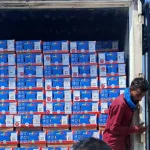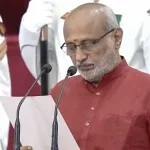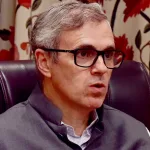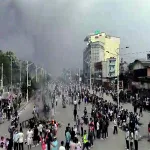Dr Khan, a founding member of Kashmir’s first drug de-addiction center set up at Police Control Room, Srinagar, says when they started in 2008, there was a reaction from political circles, general public that there was no drug abuse in Kashmir and now the scenario has changed to combat the menace.Director Youth Development and Rehabilitation Centre and noted Clinical Psychologist Dr. Mohammad Muzzafar Khan, in conversation with Rising Kashmir senior reporter Sameer Showkin Lone talks about how the drug-abuse scenario has changed all together in Kashmir from a denial mode to a wide acceptance.
How do you see the status of drug-abuse in Kashmir?
In 2008, J&K Police approached me to start the drug de-addiction services. So we started Kashmir’s first drug de-addiction center at the Police Control Room.
We started in a very small room and I was told to choose my team and start the service.
Initially, it was told that it would go for three to four months, but 14 years on it continues with more de-addiction centers coming up across J&K.
Seeing the need and response from the public, J&K police allowed it to function further. The government allotted 5 kanals at Eidgah to set up a dedicated Youth Development and Rehabilitation Centre. Today we have a 50- bedded Youth Development and Rehabilitation Centre to treat such patients.
How are the general masses in Kashmir responding to the drug-abuse?
When we started in 2008, the whole public was in a denial mode. There was a reaction from the general public that there is no drug abuse in Kashmir. Political leaders, parents and people in general said they were just making it as propaganda.
So how long did it take people to accept that the “propaganda” was in actuality a “reality”?
In 2008 we would see people with opioid abuse, medicinal opioid abuse and with cannabis abuse. But since 2016 we are seeing a complete shift. Currently we are struggling with heroin and only heroin.
How drug-abuse has evolved over a period of time in Kashmir? Is it turning into a serious concern?
It is turning into a future challenge. Now the age group involved has been another concern. Earlier it was 20-22 age group but now we are seeing more young people as young as 13-15 years of age into it.
It has cut across socio-economic lines, across rural-urban lines. We see it across societies now.
What is the government doing to tackle drug abuse?
In 2008 we had only 5-bed capacity at PCR. Then as the number of patients increased it was decided to open more such centres in Anantnag and Baramulla districts. Then again seeing the waiting list, the five bedded PCR center was upgraded to 10 beds. Now we have a 50 bedded Youth Development Center.
Today we have a number of facilities but despite that rush has not decreased which invariably shows that the drug-addiction is increasing.
If we put it into numbers we would see 2-3 patients at PCR back in 2008 and today we are seeing 10-15 coming as new patients daily.
As a strategist and consultant how are you looking at the problem?
Our Chief Secretary recently quoted a figure of 6 lakh young people who have dependency on opioids.
The worrying factor is that these young people who have dependency on opioids , are a productive age group of any society. Education becomes a casualty, and apart from that they develop associated problems like Hepatitis-C (viral infection to liver) and if this trend of drug intake doesn’t stop, in coming times they will develop associated HIV- infection that is something which has a huge cost. So we need to come up with different levels and stages of intervention.
Could you explain those stages and levels you are referring to?
See, as a society we have accepted that there is a problem, that is a stage one, which is complete. But there is a mechanism that needs to be devised.
First Stage: Helping and treating those who are affected, for that we need to have centers, resources and a proper mechanism.
Second Stage: We must have a permanent helpline, not a routine helpline, something of the nature of the 102 system, where a call is received and a team is sent to the home to facilitate the process.
Third Stage: Comes a treatment part: when a person has gone into drug abuse, he has almost exhausted all his resources. So many times a family wants a member to get treated, but they don’t have financial resources. We want the government to have a sponsored system / scheme to help and support such families.
Now I will try to explain about the levels of treatment and rehabilitation process.
One level is how the patient reaches the facility, it involves transport and sadly no hospital or center provides that.
Second level is when the patient gets admitted, he/she undergoes a number of tests, some are provided free of cost but some are to be done outside. And the treatment part may be partially supported by hospitals and some from outside.
What do you think needs to be done to make the system more responsive?
See as of now what we have been doing successfully is Screening, Admitting, Detoxifying (making the patient stable), and sending him/her home. But what after the post-detoxification? It is where we need to strategise things?
At post-rehabilitation level we are doing more or less nothing. We need to check on the patient’s pre-drug abuse status.
They need to be given skill-training or any other interests they have so that they become a productive part of society.
Another thing about the post treatment phase. Once a patient is sent home, a medicine is prescribed that prevents them from going back into drugs. This is for a minimum of six months. One tablet costs around Rs 70. This is again being borne by the family. So people with not a good financial background are not able to do this and they leave the prescription half-way.
People once normalised are approached by the nexus again or by their friends back to addiction. There have been cases where people tell us they are often approached again, they resist for once, twice but finally they go back into drugs.
Are prevention programmes more promising than treatment ones?
Our first targets should be schools, colleges where young people are more in number. Every school should have their own drug de-addiction policy, which includes training of teachers, random screening of children as well as teachers and treatment cum rehabilitation facilitation programme. A school should not be like that if they find a student is into drug abuse, and throw him out of school.
The schools should have linkages to rehabilitation centers.
Also we should be able to move de-addiction centers closer to the community especially to the vulnerable sections. Programmes should be held at Panchayat levels, Mohalla levels so that everyone gets aware of it.
How do you see the role of the Health Department at the Directorate Level?
How many primary health centers have drug screening kits available at PHCs? So if a person/ parent/ anyone has awareness of the issue and wants their ward to get screened, for that they have to come to Eidgah to get screened. So the test costs Rs 200 and if a person is from Anantnag or say Baramulla, it will add another Rs1000 as transportation cost. These drug screening kits should be made available at least at the PHC level for easy access to everyone.
In your 18 years of career dealing with drug-abuse, how many people have you treated personally?
The number would be around 7000 cases. These are those people I have admitted, treated and rehabilitated and have sent them back to society.





